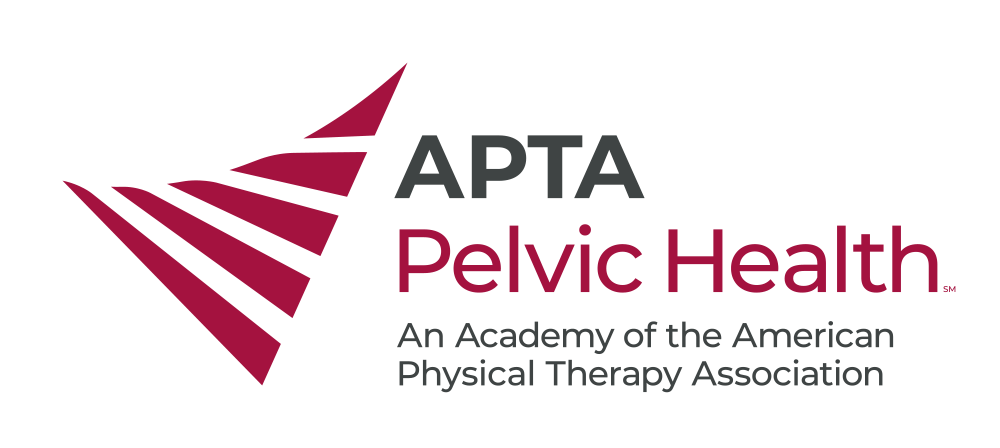Urinary Incontinence in Older Adults
Urinary incontinence (UI) is defined as the involuntary loss of urine and is more common in older adults, especially females.1,2 Various types and several potential causes of UI exist, and numerous medical and surgical treatment options are available for patients experiencing UI. The signs and symptoms, pathophysiology, and treatment options of UI will be discussed, along with implications for physical therapists in treating this older adult population.
Stress urinary incontinence (SUI) occurs when UI happens during effort or physical exertion such as with exercise, or due to sneezing, coughing, or laughing.1 Urge urinary incontinence (UUI) occurs when a sudden urge to urinate that is difficult to defer exists. UUI may be a more common issue for individuals with diabetes, Alzheimer’s disease, Parkinson’s disease, multiple sclerosis, or stroke.1,2 Mixed urinary incontinence (MUI) combines SUI and UUI and may also occur as a result of emotional stressors in life.3 Shamliyan et al4 have reported that MUI is the most common type of UI in older women. Additionally, Abufaraj et al reported that the prevalence of urinary urgency and MUI significantly increased among females aged 60 years and older from the years of 2005 through 2018.5 SUI, UUI, and MUI are shown to be the most common types of UI, but others exist as well.1 For example, functional urinary incontinence (FUI) occurs when an individual has intact storage functions but suffers from the physical inability to reach the restroom in time to pass urine.1 FUI is especially common in older adults, due to temporary or permanent decreased mobility or dexterity.1
The disordered processes, also known as the pathophysiology, of UI can be complex and can vary among individuals. Urethral hypermobility, intrinsic sphincter deficiency, an increase in afferent activity from the bladder, abnormal handling of afferent signals in the brain, insufficient urethral closure pressure, incomplete bladder emptying, detrusor muscle overactivity with impaired bladder sensation, and enlarged prostate or after prostatectomy are all various mechanisms behind the development of UI.1
Clinicians consider medication treatment when developing a treatment plan for an individual with UI. Antimuscarinics, also known as anticholinergics, are the most commonly prescribed medication for UUI, urge-predominant MUI, and overactive bladder symptoms although behavioral and lifestyle changes are attempted for three months before considering the use of this type of medication.6 As with most medications, there are potential side effects. These include dry mouth, constipation, blurred vision for near objects, tachycardia, drowsiness, and decreased cognitive function.7 There are also contraindications and special considerations for individuals considering antimuscarinics to manage their UI. Some of these considerations include individuals with gastric retention/bowel obstruction, narrow-angle glaucoma, renal, hepatic or cardiac disease, and dementia.6 As it is common that older individuals have subsequent medical issues, considering these issues is important. An additional medication aimed to reduce UUI is Mirabegron, a beta-agonist with the desired effect of relaxing the detrusor muscle, improving bladder capacity/storage, and a reduction in urinary urgency, urinary frequency, and UUI.8 An alternative treatment for individuals who wish to not take a daily pill or who do not respond to oral treatment may opt for onabotulinumtoxinA, also known as Botox, that is injected into the detrusor muscle for treatment of UUI.9
Pharmacological management of SUI consists of several options, as with UUI. Duloxetine, also known as Cymbalta, is a commonly prescribed serotonin and norepinephrine reuptake inhibitor in Europe that works by increasing the urethral sphincter muscle activity to decrease SUI, however, it is not routinely recommended for the treatment of SUI in the United States unless an individual has failed behavioral and muscle training, declines surgery and has concomitant depression that may benefit as well.6 Local topical estrogen is also considered as a treatment for SUI, however, there is inconsistent evidence on whether incontinence symptoms improve, and is typically only used when vaginal atrophy is also present.10 However, Kobata et al. found that the use of conjugated equine estrogens and estriol were effective in increasing the number of periurethral vessels in postmenopausal women with SUI, therefore this treatment method is worth considering.11 Oral estrogen has been considered as well due to its effectiveness in improving vaginal mucosa in postmenopausal women; however, randomized controlled trials have demonstrated that oral estrogen worsens UI symptoms.12 Unquestionably, great consideration should be taken when weighing the potential benefits and drawbacks of medication for UI.
Surgical treatment may also be considered for an individual with UI. Jelovsek and Reddy reported that women who are candidates for surgery present as having symptoms that include the worsening or persistence of symptoms following conservative therapy, women that have SUI only following the repair of advanced prolapse, women who are finished with childbearing, and women who demonstrate urethral sphincter dysfunction.13 Recent evidence supports using a vaginal approach for incontinence procedures, involving mid-urethral sling, bladder neck sling, and the injection of urethral bulking agents.13 Mid-urethral sling is the most commonly recommended procedure for SUI, as it has comparable to superior efficacy compared to other procedures, shorter operative and recovery time, and lower rates of repeat surgery.13 Research appears to be limited in the area of male urinary incontinence surgical approaches, possibly due to the prevalence of UI presenting much lower than that of females. The lack of literature highlights the need for additional research in this area.
UI can lead to significant deterioration in a person’s health, both mental and physical, and can therefore jeopardize an individual’s ability to socialize and work.1 The combination of SUI and urgency were positively related to falls in community-dwelling adults, and with the addition of comorbidity, individuals with UI are 50% more likely to be admitted into a long-term care facility.14 Mental health struggles are also common in those who have this condition. Research states that individuals with UI are twice as likely to develop depression and have higher levels of anxiety and lower quality of life scores.14 All of these findings suggest that lifestyle modifications could decrease the prevalence of UI, in which physical therapy can play a tremendous role. Additionally, research demonstrates that exercise interventions both in a clinical setting and with home exercise programs focusing on pelvic floor muscle strengthening improve UI symptoms.15 Quality patient education in the relevant anatomy and physiology, prognosis, and treatment options is also crucial and is an area that pelvic floor physical therapists should be well versed in. Physical therapists have a responsibility to aid in the process of empowering older adults to rediscover their autonomy, as this is vital for the older adult population.
Reference(s)
- Wyndaele M, Hashim H. Pathophysiology of urinary incontinence. Surgery (Oxford). 2020;38(4):185-190. doi:10.1016/j.mpsur.2020.01.013
- U.S. Department of Health and Human Services. (n.d.). Urinary incontinence in older adults. National Institute on Aging. Retrieved January 15, 2022, from https://www.nia.nih.gov/health/urinary-incontinence-older-adults
- Knorst MR, Resende TL, Santos TG, Goldim JR. The effect of outpatient physical therapy intervention on pelvic floor muscles in women with urinary incontinence. Brazilian journal of physical therapy. 2013;17(5):442-449. doi:10.1590/S1413-35552012005000117
- Shamliyan T, Wyman JF, Ramakrishnan R, Sainfort F, Kane RL. Benefits and harms of pharmacologic treatment for urinary incontinence in women: a systematic review. Annals of internal medicine. 2012;156(12):861. doi:10.7326/0003-4819-156-12-201206190-00436
- Abufaraj M, Xu T, Cao C, et al. Prevalence and trends in urinary incontinence among women in the United States, 2005–2018. AJOG Glob Rep. 2021;225(2):166. doi:10.1016/j.ajog.2021.03.016
- DuBeau, CE., Brubaker, L., Schmader, K., & O’Leary, MP. Treatment and prevention of urinary incontinence in women. UpToDate. 2014;14(14), 1-22.
- Siracusa, C., Mize, L., Giglio, S., McVearry Austin, M., Miracle, E., Strauhal, MJ., Ziemba, K. Pelvic Health Physical Therapy Level 1 Lecture Manual. APTA Pelvic Health, an Academy of the American Physical Therapy Association. 2020.
- Khullar V, Amarenco G, Angulo JC, et al. Efficacy and tolerability of mirabegron, a β3-adrenoceptor agonist, in patients with overactive bladder: results from a randomised european–australian phase 3 trial. Eur Urol Open Sci. 2013;63(2):283-295. doi:10.1016/j.eururo.2012.10.016
- Visco AG, Brubaker L, Richter HE, et al. Anticholinergic therapy vs. onabotulinumtoxinA for urgency urinary incontinence. The New England Journal of Medicine. 2012;367(19):1803-1813. doi:10.1056/NEJMoa1208872
- Cody JD, Richardson K, Moehrer B, Hextall A, Glazener CM. Oestrogen therapy for urinary incontinence in post-menopausal women. The Cochrane database of systematic reviews. 2009;(4):CD001405. doi:10.1002/14651858.CD001405.pub2
- Kobata SA, Girão MJBC, Baracat EC, et al. Estrogen therapy influence on periurethral vessels in postmenopausal incontinent women using Dopplervelocimetry analysis. Maturitas. 2008;61(3):243-247. doi:10.1016/j.maturitas.2008.07.015
- Hendrix SL, Cochrane BB, Nygaard IE, et al. Effects of estrogen with and without progestin on urinary incontinence. JAMA. 2005;293(8):935-948. doi:10.1001/jama.293.8.935
- Jelovsek, JE., Reddy, J. Surgical management of stress urinary incontinence in women: Choosing a primary surgical procedure. UpToDate. 2021.
- Avers, D, Wong, RA, & Guccione, AA. Management of the pelvic floor in older men and women. In Guccione’s Geriatric Physical Therapy. Mosby; 2020:502–526. https://www.sciencedirect.com/science/article/pii/B9780323609128000221
- Fricke A, Lark SD, Fink PW, Mundel T, Shultz SP. Exercise Interventions to Improve Pelvic Floor Muscle Functioning in Older Women With Urinary Incontinence: A Systematic Review. J Womens Health Phys Therap. 2021;45(3):115-125. doi:10.1097/JWH.0000000000000202
Written By: Kayla Koren, SPT kayla.koren@atsu.edu

Author Bio: Kayla Koren is a second-year Doctor of Physical Therapy student at A.T. Still University in Mesa, Arizona. She serves on the Digital Media Committee for the Journal of Women’s Health Physical Therapy, as the ATSU Physical Therapy Orthopedic Residency Assistant, and is a student board member for the ATSU Center for OT & PT, the school’s pro-bono clinic that strives to serve the underserved community. She is passionate about Women’s Health Physical Therapy, and plans to pursue this specialty in her career.


